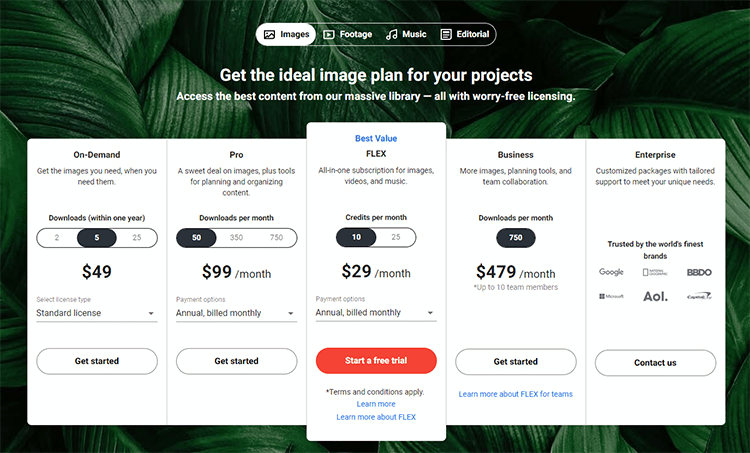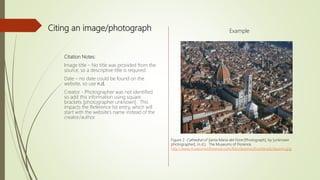If you’re diving into the world of visual marketing, you’ve probably come across Shutterstock as a go-to source for high-quality images. But understanding how their licensing and pricing work can feel a bit overwhelming at first. Basically, Shutterstock offers different licensing options to suit various needs, whether you’re creating a quick social media post or a large billboard campaign. The costs vary based on these licenses, the type of image, and how you plan to use it. Knowing the ins and outs of
Factors Influencing Shutterstock Image Costs for Marketing
When it comes to the price of Shutterstock images, several key factors come into play. Let’s break down what influences the costs so you can better plan your marketing budget:
- License Type: Shutterstock offers two main licenses—Standard and Enhanced. The Standard license covers most common uses like social media, websites, and print materials up to a certain size. If you need to go bigger, use the image in a product for resale, or require exclusive rights, the Enhanced license is necessary, and it’s more expensive.
- Image Resolution and Size: Higher resolution images or those intended for large-format printing tend to cost more. Shutterstock charges based on the size and quality you select, so think about how you’ll use the image to choose the right option.
- Subscription vs. On-Demand Purchase: Shutterstock offers subscription plans where you pay a monthly fee for a set number of downloads. These are often cheaper per image if you need lots of visuals regularly. On the other hand, if you only need a handful, on-demand purchases might be more cost-effective, but they usually come with a higher per-image price.
- Image Popularity and Demand: Popular images or those with high demand can sometimes cost more because they’re more sought after. Shutterstock’s pricing algorithms factor in the image’s popularity and uniqueness.
- Usage Scope: How you plan to use the image significantly impacts cost. For example, images used in national advertising campaigns or large-scale print runs typically require an Enhanced license, which costs more. Conversely, small digital uses may only need the Standard license.
Understanding these factors helps you choose the right license and budget accordingly. Always consider your project’s scope and future needs—investing a little more upfront with the right license can save you from legal issues and additional costs down the line. Remember, the goal is to get high-quality images that resonate with your audience without overspending, and knowing what influences price points is the first step to doing just that.
Types of Shutterstock Licenses and Their Price Differences
When you’re diving into the world of Shutterstock images, one of the first things you’ll notice is that not all licenses are created equal. Understanding the different types of licenses is crucial because it directly impacts your budget and how you can use the images.
Shutterstock offers primarily two types of licenses:
- Standard License
- Enhanced (or Extended) License
Standard License
The Standard License is suitable for most common marketing needs—think social media posts, websites, presentations, blogs, and printed materials like flyers or brochures. It usually covers up to 500,000 copies or views, which is more than enough for many small to medium-sized campaigns.
The cost for a Standard License varies depending on whether you purchase images individually or via subscription plans. Typically, individual images cost around $10-$50 each, but if you opt for a subscription, the per-image cost drops significantly, sometimes below $10 per image.
Enhanced (Extended) License
The Extended License is designed for more demanding uses. If you plan to sell products with the Shutterstock image (like merchandise, posters, or products in a commercial setting), or if your campaign exceeds the limits of the Standard License, then this is the license you’ll need.
The price for an Extended License is higher—often starting at around $80 for a single image, with discounts available when purchasing in bulk or through subscription plans. The key difference is that it allows:
- Unlimited reproductions and views
- Use in products for resale or commercial distribution
- More flexibility in how the image is used
Price Differences at a Glance
| License Type | Typical Cost (per image) | Best For |
|---|---|---|
| Standard | $10 – $50 (or included in subscription) | Web use, social media, printed marketing materials up to 500,000 copies/views |
| Extended | $80 and up | Commercial products, resale, unlimited reproductions |
In summary, choosing the right license depends on your intended use. If you’re just creating content for online marketing or small print runs, the Standard License is usually sufficient. But for larger-scale commercial projects, investing in an Extended License ensures you’re covered legally and creatively.
How to Choose the Right Image Package for Your Marketing Needs
Now that you’re familiar with the different licenses, the next step is figuring out which Shutterstock image package best fits your marketing goals. It might seem overwhelming at first, but breaking it down makes the decision much easier.
Here are some key considerations to help you choose:
1. Assess Your Usage Scope
Think about where and how you’ll use the images:
- Are these images for social media posts or digital ads?
- Will they be printed on flyers, posters, or billboards?
- Are you creating products for resale that include these images?
Understanding your usage scope helps determine whether a subscription or individual image purchase makes more sense. If you’re creating a few pieces of content, buying images individually or opting for a small subscription might be best. For ongoing projects, a larger subscription plan could save you money in the long run.
2. Consider Your Budget
Marketing budgets vary widely. If you’re a small business or just starting out, you might prefer the flexibility of pay-as-you-go options. On the other hand, if your team produces a high volume of content regularly, investing in a subscription plan could be more economical.
3. Think About Image Volume
If you anticipate needing dozens or hundreds of images over a few months, check out Shutterstock’s subscription options. They often come with:
- Monthly plans with a set number of downloads
- Annual plans for long-term projects
For smaller needs, single-image purchases or smaller packs might suffice.
4. Match Your Project Type with License Type
If your project is for online use or small print runs, the Standard License is likely enough. But if you’re producing merchandise, selling products, or planning large-scale advertising campaigns, Extended Licenses are the way to go.
5. Take Advantage of Bundles and Subscriptions
Many marketers find that subscribing to a plan that offers a set number of images per month helps control costs and ensures a steady flow of quality visuals. Plus, Shutterstock often offers bundle deals or discounts for new subscribers.
Final Tips
- Always double-check the license details for each image before use.
- Plan ahead to avoid last-minute purchases at premium prices.
- Keep your marketing goals in mind—invest in the license type that aligns with your project’s scale and scope.
By carefully evaluating your needs and budget, you’ll be able to select the perfect Shutterstock package that makes your marketing efforts look professional without breaking the bank. Remember, the right visuals can make all the difference in capturing attention and driving results!
Tips for Saving Money When Purchasing Shutterstock Images
Let’s face it — high-quality images can quickly add up in marketing campaigns. But don’t worry, there are plenty of smart ways to save money while still getting the visuals you need. Here are some tried-and-true tips to help you keep your budget in check:
1. Opt for Subscription Plans
Instead of buying images individually, consider a Shutterstock subscription. These plans often offer a set number of downloads per month at a significantly lower per-image cost. If you’re frequently creating content, this can be a real money-saver!
2. Use the Image Search Filters Wisely
Shutterstock provides filters that help narrow down your search, making it easier to find exactly what you need without sifting through irrelevant images. This efficiency means less time and fewer downloads of unnecessary images, saving you money.
3. Look for Collections and Packs
Sometimes, Shutterstock offers collections or packs at discounted rates. These bundles can be perfect if you need multiple related images for a campaign, giving you more value for your money.
4. Use the License Options Carefully
Make sure to choose the right license for your project. If you only need an image for a small-scale campaign or internal use, a standard license usually suffices. Avoid upgrading to a more expensive extended license unless it’s absolutely necessary.
5. Take Advantage of Promotions and Discounts
Keep an eye on Shutterstock’s promotional offers. They often run sales or discounts, especially during holidays or special events. Signing up for their newsletter can keep you informed about these deals.
6. Plan Your Downloads
Instead of downloading images on a whim, plan your content calendar and gather all your needed visuals at once. This way, you can take advantage of bulk discounts and avoid unnecessary purchases.
Conclusion and Final Tips on Shutterstock Image Pricing for Marketing
Navigating Shutterstock’s pricing can seem overwhelming at first, but with a little strategy, you can make the most of your budget. Remember, the key is to plan ahead, choose the right licenses, and leverage all available discounts and subscription options.
Here are some final tips to keep in mind:
- Assess Your Needs: Determine whether a subscription or individual purchase makes more sense for your project frequency.
- Stay Updated: Follow Shutterstock’s promotions and sign up for newsletters to catch special deals.
- Be Selective: Use filters and collections to find the most relevant images quickly, avoiding unnecessary downloads.
- Optimize Usage: Use images efficiently across multiple platforms to maximize your investment.
At the end of the day, understanding how Shutterstock prices its images—and utilizing these tips—can help you create stunning marketing materials without breaking the bank. Happy designing!



